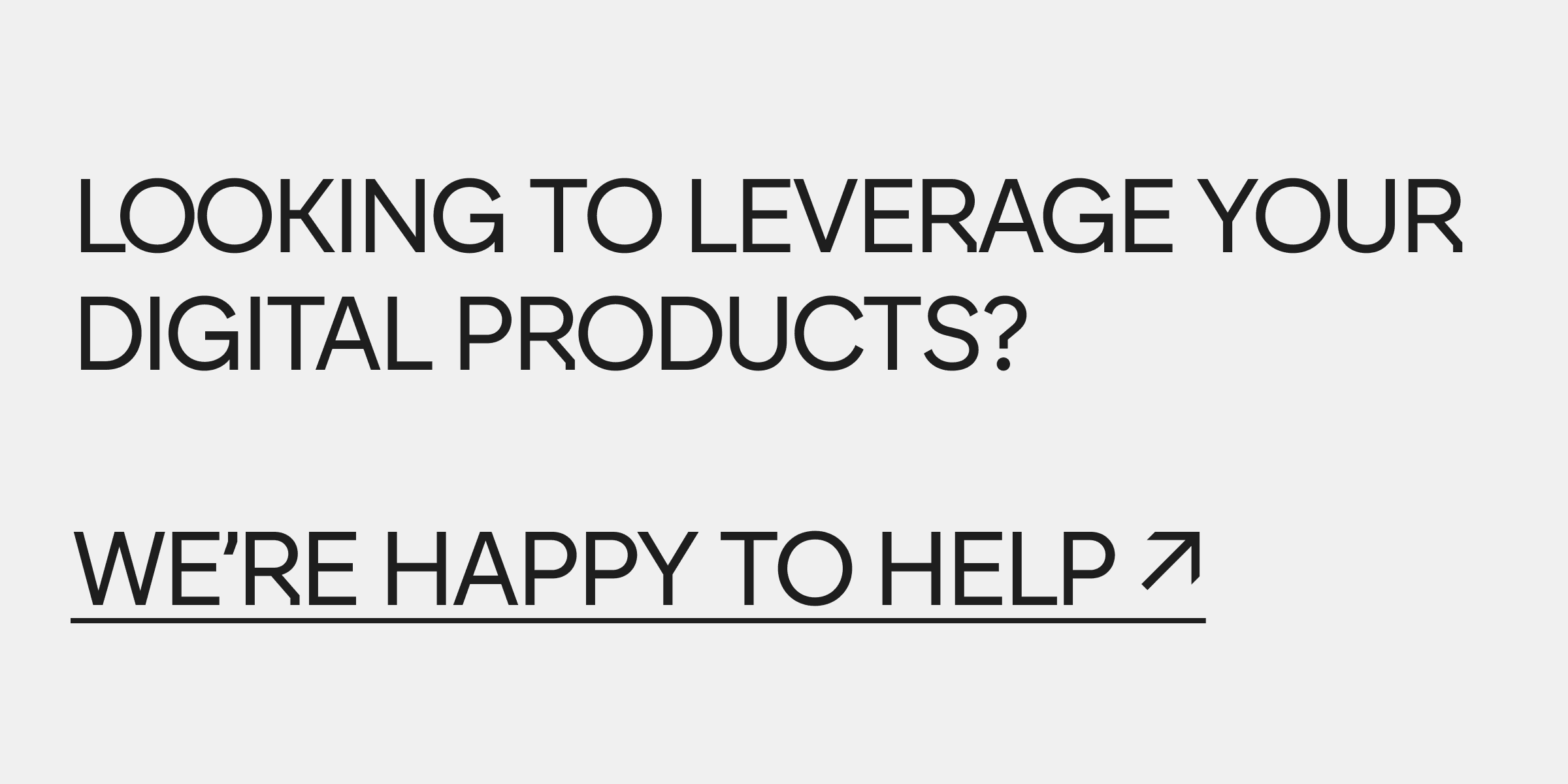Looking for a high-quality, headless content management system (CMS) for managing your content? Then, you might benefit from a CMS like Contentful. In this article, we’ll break down everything you need to know about Contentful, from its features to pricing, benefits, and what industries it’s best for.
What is a Headless CMS?
A headless CMS is a modern way of content management that decouples the backend from the frontend, giving you more flexibility and scalability. Unlike traditional CMS platforms where content is tightly coupled to the presentation layer, a headless CMS separates the two. This means that content is managed in one place, but can be delivered to any digital channel, whether it's a website, mobile app or other digital platform.
If you want to know more, let's dive in our guide: What Is the “Headless” Approach in Software Development?
What Is Contentful CMS?
Let’s begin our Contentful CMS review by defining basic terms. Contentful is a cloud-based CMS designed to help businesses manage and deliver content across multiple platforms. Unlike traditional CMSes that are tied to specific website templates or structures, Contentful takes a headless approach. This means it separates content from the presentation layer, allowing you to deliver content anywhere - websites, apps, or other digital platforms. Additionally, Contentful's flexibility supports composable content, enabling marketers to create, manage, and distribute content from various sources without consolidation, thus enhancing collaboration and adaptability.
Key Features of Contentful CMS
Thinking of switching to a headless CMS? Here’s what makes the headless CMS Contentful stand out.
- Headless Architecture: Content is not tied to any specific frontend, giving you complete flexibility in how and where your content appears.
- Composable Content Platform: Contentful acts as a composable content platform, allowing marketers to create, manage, and distribute content flexibly across digital experiences. It enables the reuse of individual content pieces and integrates various data sources without needing to migrate existing content, enhancing efficiency and scalability in content management.
- API-Driven: Contentful uses RESTful and GraphQL APIs, making it easy to integrate with other tools and platforms.
- Content Modeling: You can define your own content structures to fit your unique needs.
- Multi-Channel Delivery: Publish content to websites, mobile apps, smart devices, and more from a single source.
- Content Delivery Network (CDN): Contentful includes an integrated CDN to ensure fast and efficient content delivery to global audiences.
- Developer Tools: Contentful headless CMS provides CLI tools, SDKs, and robust documentation to help developers build custom integrations and frontend experiences.
- Collaboration Tools: Teams can work together seamlessly with built-in workflows, roles, and permissions.
- Scalability: Contentful is designed to grow with your business, handling everything from small blogs to enterprise-level operations.
How Does Contentful Work?
At its core, Contentful CMS is a content hub. It allows you to create, manage, and organize content in a structured way so that it can be reused across different channels. By enabling you to orchestrate content from various data sources, it ensures flexible and consistent content management and delivery. Here’s a step-by-step look at how it works:
1. Content Modeling
Define your content types, such as articles, products, or team bios. Each type includes specific fields like text, images, or metadata. This structure ensures consistency and makes content easier to manage.
2. Content Creation
Contentful’s user-friendly editor allows team members to input content without needing technical skills. You can save drafts, add metadata, and organize assets all in one place.
3. APIs for Integration
Developers use Contentful’s APIs to retrieve and display content on your website, mobile app, or other platforms. The headless architecture ensures the content is accessible wherever it’s needed.
4. Content Delivery
Once integrated, the content dynamically updates across all platforms. For example, editing a product description in Contentful updates it everywhere it appears.

Benefits of Using Contentful CMS
Choosing Contentful as your CMS can offer significant advantages:
Flexibility and Customization
Contentful’s headless approach allows you to design the frontend experience exactly as you want. Whether you’re building or redesigning a website, a mobile app, or even integrating with voice assistants, Contentful provides the tools you need.
Improved Collaboration
With roles, permissions, and workflows, Contentful CMS streamlines teamwork. Content creators, designers, and developers can all work within the same system without stepping on each other’s toes.
Scalability for Growth
As your business grows, Contentful can scale with you. It’s capable of handling large volumes of content and complex integrations, making it suitable for businesses of all sizes.
Multi-Channel Content Distribution
Instead of managing separate CMSs for your website and app, Contentful lets you control everything from one platform, accommodating all types of content as well as their presentation layers. This not only saves time but also ensures a consistent brand message.
API-First Design
Contentful’s API-driven approach allows seamless integration with other tools and systems. Whether you’re using analytics platforms, e-commerce software, or marketing tools, Contentful can connect with them.
Speed and Reliability
With Contentful’s integrated CDN and high availability, your content is delivered quickly and reliably to users around the globe.
Contentful as a Headless Content Management System
Contentful is a prime example of a headless CMS, providing a robust and flexible platform for managing digital content. As a headless CMS, Contentful separates the content from the presentation layer, allowing you to deliver content anywhere, from websites to mobile apps and other digital platforms.
One of the outstanding features of Contentful is its API-driven architecture. With RESTful and GraphQL APIs, developers can easily integrate Contentful with other tools and systems to create custom front-end experiences. This flexibility is further enhanced by Contentful's ability to create custom content models, ensuring that your content structure fits your unique needs.
Contentful also excels at multi-channel content delivery, allowing you to manage and distribute content from a single source. This not only streamlines content management, but also ensures a consistent brand message across all channels. Whether you're a small business or a large enterprise, Contentful's headless CMS platform gives you the tools you need to manage and deliver content efficiently.
Who Should Use Contentful?
Contentful is a versatile platform suitable for various industries and use cases. Here are some examples:
E-Commerce Businesses
Contentful’s flexibility makes it ideal for online retailers who need to manage product descriptions, images, and customer reviews across multiple platforms.
Read also: Best E-Commerce Platform for Small Business Owners
For companies producing a high volume of content, Contentful simplifies the management and delivery process. Editors can easily update articles and distribute them to websites and mobile apps.
Technology Companies
Developers love Contentful for its API-driven design and the freedom to build custom frontend experiences.
Marketing Teams
Contentful allows marketers to create and manage campaigns across various channels, ensuring consistency and faster time-to-market.

How Does Contentful Compare to Other CMS Platforms?
While Contentful offers many benefits, it’s important to understand how it stacks up against other CMS options:
Traditional CMSs (e.g., WordPress)
Unlike monolithic CMS systems, which tie content to themes and templates, Contentful’s headless approach gives you complete control over design and delivery. However, unlike monolithic CMS platforms that enable website creation without coding but come with performance and security challenges, Contentful may require more developer involvement.
Other Headless CMSs (e.g., Strapi, Sanity)
Contentful stands out for its robust APIs, extensive documentation, and enterprise-grade features. While other headless CMSes may offer lower costs or simpler setups, Contentful excels in scalability and support.
Contentful CMS Pricing
Contentful offers various pricing tiers to suit different needs, ranging from a free plan for small projects to enterprise plans with advanced features. Pricing is based on usage metrics like API calls, content types, and users. Be sure to evaluate your requirements before choosing a plan.
Use Cases for Contentful
If your digital management needs include multi-language websites, omnichannel campaigns, or interactive applications, Contentful CMS will serve you well.
Multi-Language Websites
Contentful’s localization features make it easy to manage content in multiple languages, helping businesses reach a global audience.
Omnichannel Campaigns
Contentful allows you to create campaigns that span across web, mobile, email, and social media, ensuring consistent messaging.
Interactive Applications
Contentful can power dynamic, interactive applications that require real-time content updates, such as event management platforms or customer dashboards.
Best Practices for Using Contentful
To get the most out of Contentful, it’s essential to follow best practices that optimize your content management processes. Here are some tips to help you maximize the platform’s potential:
- Define a Clear Content Strategy: Before diving into Contentful, outline a clear content strategy that includes your content goals, target audience, and content types. This will provide a roadmap for your content creation and management efforts.
- Create a Structured Content Model: Develop a structured content model that defines and organizes all the different content types your organization uses. This will ensure consistency and make it easier to manage content across various channels.
- Use Reusable Content Components: Leverage reusable content components to streamline content creation and management. This approach allows you to maintain consistency and efficiency when delivering content across multiple platforms.
- Take Advantage of Contentful’s APIs: Utilize Contentful’s APIs to integrate your content with other digital platforms and tools. This will enable seamless content delivery and enhance the overall user experience.
- Monitor and Analyze Your Content Performance: Use analytics tools to track and analyze your content performance. By making data-driven decisions, you can continuously improve your content strategy and achieve better results.
By following these best practices, you can create a robust and scalable content management system with Contentful that meets your organization’s needs and helps you deliver content effectively across all digital platforms.

Getting Started with Contentful
If you’re ready to try Contentful, here are some steps to get started:
- Sign Up for an Account: Visit Contentful’s website and create a free account to explore its features.
- Define Your Content Model: Think about the types of content you’ll need and set up your content model accordingly.
- Invite Your Team: Add team members and assign roles to ensure smooth collaboration.
- Integrate with Your Platform: Use Contentful’s APIs to connect it with your website, app, or other channels.
- Start Publishing: Begin creating and distributing content to your desired platforms.
Conclusion
Contentful is a powerful and flexible CMS that caters to modern businesses’ needs. Its headless architecture, scalability, and multi-channel capabilities make it a great choice for companies looking to streamline content management. Whether you’re a small business or a large enterprise, Contentful can help you deliver content efficiently and effectively.
If you’re looking to harness the power of Contentful but need expert guidance, our team at Adchitects can help. We specialize in creating custom solutions tailored to your unique business needs. Contact us today to learn how we can help you implement and optimize Contentful for your projects.
FAQs About Contentful CMS
Is Contentful Suitable for Non-Technical Users?
Yes, Contentful’s user-friendly interface makes it accessible for content creators without technical expertise. However, integrating and customizing Contentful often requires developer support.
Can I Use Contentful for Free?
Contentful offers a free tier that is ideal for small projects or testing. For larger projects, you’ll need to upgrade to a paid plan with additional features and higher usage limits.
How Does Contentful Handle Scalability?
Contentful is built on a cloud infrastructure, making it highly scalable. It can handle everything from small-scale websites to large enterprise operations with high traffic and complex content needs.
Does Contentful Support Multi-Language Content?
Yes, Contentful has robust localization features, enabling you to manage and deliver content in multiple languages.
What Are the API Options Available in Contentful?
Contentful provides both RESTful and GraphQL APIs, allowing developers to retrieve, update, and manage content efficiently.
Is Contentful Secure?
Contentful offers enterprise-grade security, including data encryption, role-based access control, and compliance with industry standards like GDPR.
Can Contentful Integrate With Other Tools?
Yes, Contentful’s API-first approach makes it easy to integrate with a variety of tools, including analytics platforms, e-commerce solutions, and marketing automation systems.






